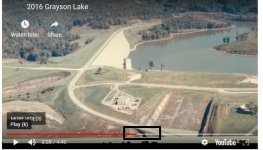franklin
Gold Member
- Jun 1, 2012
- 5,016
- 7,151
- Detector(s) used
- Garrett ADS-7X, Fisher Two Box M-Scope, Mother Lode Locator, Dowsing Model 20 Electroscope, White's TM808, White's TM900, Inground Scanners
- Primary Interest:
- All Treasure Hunting
That is why some believe that Filson himself wrote the 'Journals', as a construct to lure more people into KY to sell land. Others think Boone was in on it because while on long hunts he was known to read from the latest novel by one Jonathan Swift, Gulliver's Travels. He named a creek after one of the characters in that novel not too far from Ft. Boonesboro and the Indian Old Fields (Eskippakithiki). I think it is called Lundegren Creek or something like that.
I have trouble with both of those theories because of their known characters and status. That would be dishonorable to mislead or to make a falsehood about Silver or a fictional man and build a story about treasure to lure people into the frontier like that. It would be beneath them to do such a thing.
What about John Filson being killed after a meeting with his partners in Lowlantsville, Ohio today Cincinnati, Ohio. He was killed on a creek going from the Ohio River to Lexington, Ky. His partners went on to be big land speculators maybe they used John Filson's knowledge and maps to invent the story and then they killed Filson because he did not go along with the story? Stranger things have happened.
There is low grade amounts of silver in Kentucky but I do not believe they are in paying amounts. I believe it was a land scam to get settlers across the Cumberland Mountains. It was outlawed at that time by the King of England. Daniel Boone and all the others kept forcing the Indians in to treaties to take more and more of their land. But anyway if J. Swift did any silver gathering it was most likely stolen on the Spanish Main carried into the mountains and smelted into coins.



